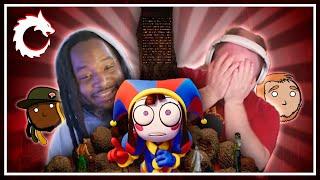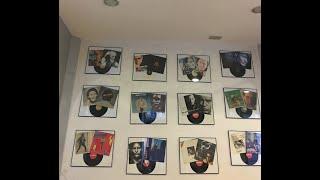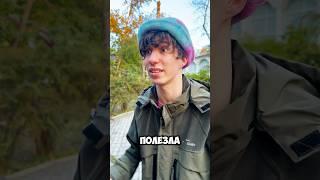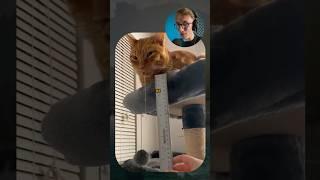
Can THIS remove my Newtonian star spikes, and turn it into a "refractor"??
Комментарии:

I wonder if someone makes curved spider veins to completely remove all diffractions? Either way thats a cool effect! And I wouldn't worry about bats, I would be more worried about robins showing up 😛
Ответить
No idea how those veins work but I think you mean the ‘Bat Wing’ that could fly!
Ответить
Has anyone replaced the open end of a Newt with an Optically neutral piece of glass with the Secondary Mirror suspended in the middle ? This would resemble an SCT of course but without the Optical “curve” . It would help to keep the Primary Mirror clean as well . Just a Newb question ./srk
Ответить
Technically it is overlapping existing spikes inversely... True method is making mask with 4 holes just around the spikes without any obstruction.
Ответить
What does blur exterminator do to the strange stars created by the bat wings?
Ответить
In other words, diffraction is happening at the edge of an obstruction and directs light perpendicularly to that edge. A curved spider vane and curved shapes will hence redirect (diffract) light all across the FoV and increase the halo around the stars rather than create well defined spikes.
Ответить
Amazing how two telescopes on the same mount allow you to test out and compare different hypothesis right away, so cool!
Ответить
👍👍👍👍👍👍👍
Ответить
Mmmm appetizing 😋
Ответить
I didnt care for now what appears like diamond 💎 stars i rather have rhe spikes
Ответить
I don't like it.....Just make the telescope with the curved spider viens to eliminate the spikes.
Ответить
I thought they would help eliminate the spikes, but not work as well as they did. Remember that some spiders used curved veins to (or try to) eliminate the spikes, therefore they're due to the veins being straight and across the FOV.
"Jingle bells, Batman smells,
Robin laid an egg,
The Batmobile lost a wheel,
the Joker got away, hey"
Geek On, Cuiv!

You can call them "Bat-inov Masks". You're welcome.
Ответить
Thanks Cuiv.
Ответить
Been using these on my 250p for a while now, they’re amazing!
Ответить
This is blasphemy! Removing defraction spikes from a Newwt...... in Gretta's tone "how dare you" hehehehehehe
Ответить
I have a Newtonian scope precisely because I love diffraction spikes. No bat-scope for me.
Ответить
Great video again, brilliant actually. I must have missed it but where can I purchase a new one piece spider for my 200mm Meade? I just cannot collimated that thing, I’m desperate. Bought it from “All-Star Telescope” and it showed up damaged, their answer is to ghost me, lol.
Ответить
I’m guessing this is like a curved spider, which removes the spikes but “moves” the diffraction into a “blob” on the star, making the star less sharp. I’d rather have the spikes
Ответить
My solution to the diffraction from the spider vanes has been to 3D print a curved vane spider. Like these apodizers, it's almost magical how well it works. In both cases, the overall diffraction increases, but it is distributed across the image and reduces the contrast just a little bit. Maybe not quite a refractor, but getting close.
Ответить
This is apparently not available in the US. Is there another source?
Ответить
It looks like the spikes were not removed, but rather replaced by the spikes from the bat-thingies. So you just have different spikes.
Ответить
Yeah I don't know if it's a sign of me being very early in my astrophotography or showing my age but I rather enjoy the diffraction spikes, like you said it reminds me of the hubble photos I grew up with.
Ответить
Thank you, Cuiv, for your hard work! I enjoy your videos!!
Ответить
Yes appetizer
Ответить
They need to use 2 arcs to hold the secondary. We use one arch with our hyperstars to remove the single diffraction spike cause by cables. By routing the cables in an arch it removes the spike.
Ответить
I did some research on these things a while back. Basically that shape is a dissected circle and what it does is to scatter the light that would normally get concentrated into diffraction spikes. I thought about using them but I would have to print them myself since I use the smaller Skywatcher 130p-ds and nobody seems to make them to fit small scopes like that. Honestly though, if it makes my stars look weird, I would rather have the clean spikes
Ответить
Well... at least now you know how to align the spikes from the two scopes ... remove them, and the problems is solved. :D
Ответить
You always bring a smile to my face. Thanks
Ответить
“The next steps would be… “ i was expecting you to say dress up like batman while using the telescope at night 😂
Ответить
But I love my spikes, last week i glued strings on my refractor objective
Ответить
Witchcraft I tell ya!
Ответить
Bat Scope, Spider Vanes, any other superheroes? Your laugh is more like that of a Bond villain.
Ответить
Okay cool but how do I do the opposite, I want super thin and long spikes :)
Ответить
You can also get rid of the star spikes by using curved spider struts. You want the strut tangents to uniformly span a full 360deg angle range. It will still diffract, but the diffraction will not be concentrated in specific directions.
Ответить
You know what else is cool and ridiculous at the same time?
Bicycle choppers.

The operating principle should be as follows.
The perimeter of each element is equivalent to the perimeter of a circle whose diameter is the difference between the diameters of the two mirrors of the telescope divided by 2. For example if the main mirror is 150mm and the secondary is 50mm (150-50)/2= 50mm. This turns each blade of the spider, with regards to diffraction, into a circle which therefore does not generate the diffraction spikes. It should be noted that each side protruding from the device must have the curvature of that circle and that the sum of the subtended angles must give 360°. From what we can see, the device does not appear to be made accurately with respect to the theoretical curvatures.
Here more information but YT doesn't like links so search for "Techniques pour éliminer les aigrettes de diffraction provoquées par les télescopes"
Thinking about it... When photographing simultaneously with 2 Newtonian telescopes you have to align both images to combine them, and you should also align the spikes. so it's better that at least one of the two doesn't have them.

I prefer my bat "appetizers" wrapped in bacon 🥓. Ha!
But seriously, this sort-of solves your problem of needing to synchronize the spider vanes on your "double-barrel cuiv-scope".

I'm not really a telescope aficionado... but I do understand what's going on...
(The comment from @ceoyoyo includes an excellent explanation.)
(The little bats are effectively cancelling out some of the error created by the spider.)
As for your closing question....
Assuming that those were designed specifically for that telescope and original spider...
I would expect them to work best with those.
The different spider will alter some of the optical properties that they are correcting.
(But I have no idea how significant a particular change would be to the result.)

I think the diffraction spikes add a bit of artistic flare, especially on the large stars.
Ответить
"Kind of cool and ridiculous at the same time" is definitely where the fun happens in this hobby. 😆
Ответить
I experimented with it on several Newtonian telescopes, but the biggest issue is that something like Batman appears in the ghost of the huge stars. While it is possible to try this with M42 or IC434, the correction is challenging. However, if there are no nearby stars like Alnitak, excellent results can be obtained using BXT.
Ответить
I did look a dual reflector setup but am currently setting up a refractor setup instead. The thing with fast reflectors is the collimation and posible mirror shift moving the alignment of both scopes fov. Im to Lazy to deal with that😂 With the refractors i will have fixed optics
Ответить
The evil laugh cracks me up! As always, good video Cuiv!
Ответить
Hi Cuiv, Jaime from Chile again. If you going to 3d printing your own apodizing devices, make sure to scale acording to your telescope .
The total length should be according to the following simple formula:
Main mirror diameter minus secondary mirror diameter divided by 2. Then at the moment of placing on the spider, make sure you consider to fit the Device starting from the edge of the secondary mirror to eliminate the spikes because they are placed right on the light path of the telescope.
Hope this information will help you.
Greetings from BelloCielo - Chile 🇨🇱

Best tip I found was to keep the lid on the front baffle and sit by a nice warm fire with a cup of coa coa. Lol
Ответить
There’s no aliexpress link, right?
Ответить

























